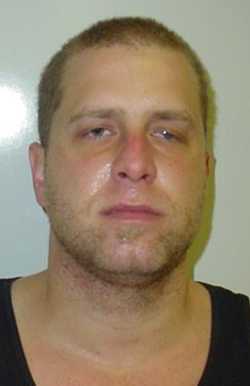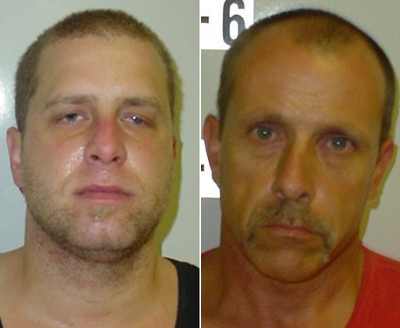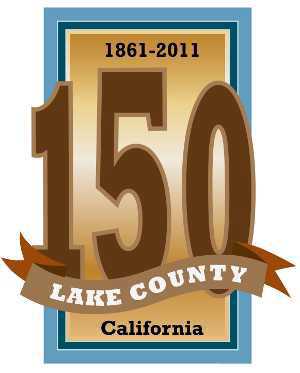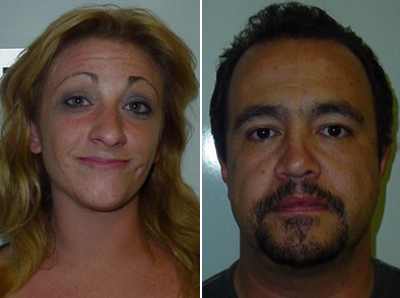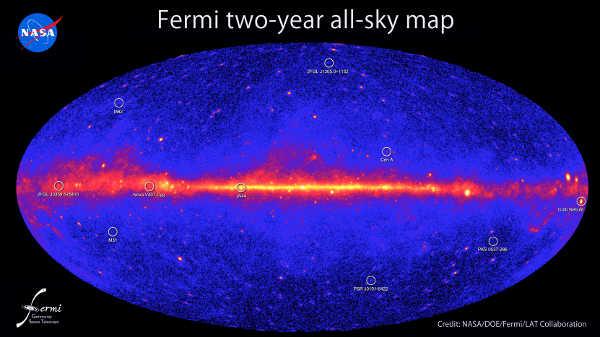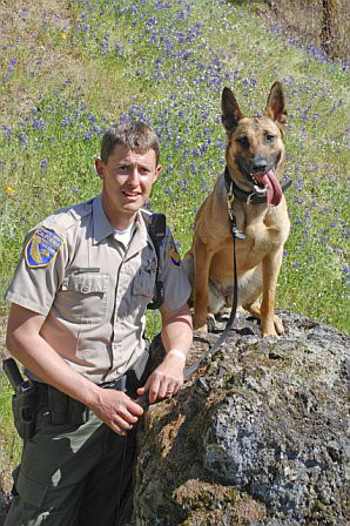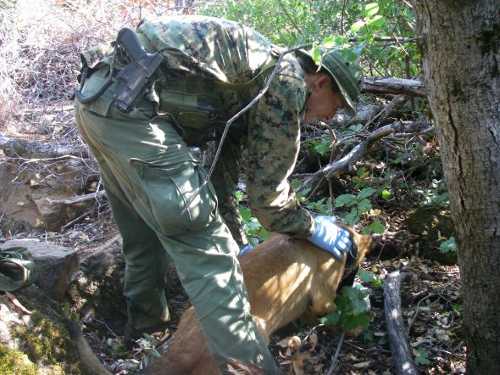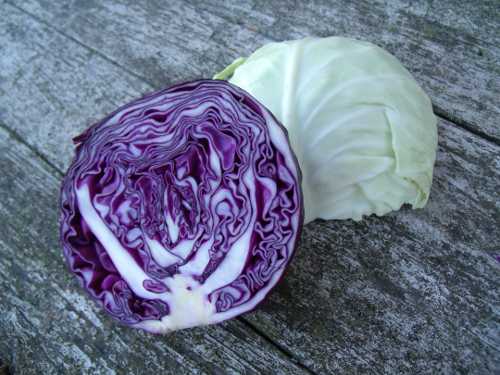
Green cabbage, the most common variety, and its cousin, red cabbage, nestle side-by-side in this photo. Photo by Esther Oertel.
“The time has come, the walrus said, to talk of many things: of shoes, and ships, and sealing wax, of cabbages and kings.”
Not to disappoint author Lewis Carroll, who wrote this poem in 1871 as part of “Through the Looking Glass,” but today our topic will cover merely one of the talkative walrus’ proposed subjects: cabbage. (Who knows? Perhaps we’ll cover shoes or sealing wax in another column.)
Cabbage is a member of the Brassica oleracea species, along with such vegetables as broccoli, cauliflower, kale, collards, kohlrabi, Brussels sprouts, and the like. The name brassica means cabbage in Latin.
Cruciferous is an alternative name for this produce group because of the four petals on their blooms, resembling a cross. Cruciferous is derived from cruciferae, Latin for cross-bearing.
Cultivated cabbage is descended from the wild mustard plant, also called sea cabbage or wild cabbage, which is native to the Mediterranean. This cabbage ancestor looked more like collard greens or kale than the cabbage we know today.
Cabbages have been cultivated for more than 4,000 years. Early varieties were loose-leafed, not like the dense headed cabbage with which we're familiar. The head variety was developed by northern European farmers in the middle ages.
Since cabbage grows well in cool climates, yields large harvests, and stores well, it quickly became a major crop throughout Europe once it was widely distributed there by the Celts about 600 B.C.
Green cabbage is the most common variety, with a dense head of compact leaves. It forms the base for coleslaw, is added to salads, soups, and stews, and its ample leaves are used in the stuffed cabbage dishes of many countries. It’s the cabbage of the quintessential Irish-American corned beef and cabbage. Look for heads that feel heavy for their size with tightly packed, moist looking leaves.
Red cabbage is similar to green cabbage other than the color, which is a cross between red and purple (a deep magenta), and its slightly smaller size.
Red cabbage adds color and texture to salads and is present in a variety of delicious cooked dishes, such as caraway red cabbage or red cabbage with apples.
Red cabbage turns blue when cooked, but this may be prevented by adding acid such as vinegar or lemon juice when cooking.
The same characteristics that indicate a healthy head of green cabbage apply to red.
Savoy cabbage, also known as curly cabbage, has ruffled, lacy, deeply ridged leaves, which are more loosely packed than the leaves of red or green cabbage, though it retains a round shape.
Because of its interesting leaves, some refer to it as the prettiest cabbage variety. Its uses are similar to green cabbage, though its flavor is more delicate. It’s especially yummy when braised in butter.
Napa cabbage, one of my personal favorites, is also called Chinese cabbage or celery cabbage. It has light green ruffled leaves that flower off thick, white stalks, and is long, rather than round. The leaves are more loosely packed than those of round headed cabbage. It’s used in Asian stir-fried dishes and made into kimchi, spicy Korean fermented cabbage.
Chinese chicken salad is typically made with Napa cabbage. Look for heads that are fresh-looking and not wilted, with no brown at the tips of the leaves.
Bok choy, a type of cabbage, is most commonly known for its use in Asian dishes. It has loosely bundled deep green leaves that grow from pale stalks, and, like Napa cabbage, has an elongated shape.
Its flavor is brighter than other cabbage varieties. Braising brings out its sweet flavor. It may be cooked whole (especially if baby bok choy) or with its leaves separated. Like Napa cabbage, the leaves should look fresh and not wilted.
Cabbage has long been stigmatized because of the unpleasant smell emitted when cooked. Recent studies reveal that cooking cabbage for four minutes or less greatly reduces the odor, which doubles when cooking time hits five to seven minutes.
The ancient Greeks and Romans prized cabbage for its perceived curative properties, believing cabbage could heal great numbers of ills. Egyptian pharaohs ingested copious amounts of it the evening before planned bouts of drinking, thinking it would allow them to drink more with fewer negative effects of alcohol.
In 1769, Captain Cook’s ship’s doctor used sauerkraut on soldiers who were wounded during a severe storm, saving them from gangrene.
The truth is that cabbage is a very healthy vegetable, as are all in the brassica family. It’s recommended that these cruciferous vegetables be consumed at least two to three times weekly in serving sizes of 1-1/2 cups. More frequent consumption of greater amounts (four to five times weekly in quantities of two cups) will reap greater benefits.
Because different types of cabbages offer unique benefits to the body, alternating the type consumed is a good idea.
Cabbage’s outer leaves are rich in vitamin E, and the entire head contains large stores of vitamin C. Raw cabbage contains as much of it as lemon juice, in fact.
Studies show it has cancer preventative properties, particularly colon cancer, and in some cases, cabbage is even curative. Raw cabbage cleans waste from the stomach and upper bowels, which improves digestion and reduces constipation.
It also stimulates the immune system, kills harmful bacteria, soothes ulcers, and improves circulation. The fiber in cabbage aids in the body ridding itself of excess cholesterol.
It’s interesting to note that allowing cabbage to sit for five to ten minutes after cutting it prior to cooking increases beneficial enzyme activity. Unused cut cabbage that’s stored in the fridge should be used as soon as possible, however, as its vitamin C deteriorates fairly quickly.
I was inspired to write about cabbage because of a sauerkraut recipe I saw recently in the newly-released cookbook by the University of California Master Gardeners of Lake County, “Cooking with the Seasons.”
Years ago a friend gave me a jar of wonderfully tasty homemade sauerkraut, which had none of the overly acidic, vinegary tones that commercial sauerkraut normally contains. I’ve been searching for such a recipe ever since and am happy to have found it in a local cookbook.
The inspirational sauerkraut recipe is by Master Gardener Gabriele O’Neill, who has generously agreed to share it with us.
Her version of sauerkraut contains juniper berries, which are berry-like seed cones from various species of juniper trees.
They’re popular in European cuisine, particularly in Scandinavia, to impart a sharp, clear flavor to meat and cabbage dishes. Juniper berries are what give gin its unique flavor, and they pair especially well with strongly-flavored game meats, such as venison.
Many supermarkets carry them in their spice department (my local market does), but if they prove difficult to locate, they may be ordered online.
If you wish to purchase a copy of “Cooking with the Seasons,” you may call the Master Gardeners of Lake County at 263-6838 or visit their Lakeport office at 883 Lakeport Boulevard. The cookbooks cost $13 and support the educational efforts of the local Master Gardeners. (My recipes for lavender cream scones and lemon curd are on page 48 in the summer section.)
For those who live in the south county and can’t get to Lakeport, leave a message at the above number for O’Neill and she’ll make sure the cookbooks are available at a south county location.
For more information about the Master Gardeners of Lake County, take a peek at their website at http://celake.ucdavis.edu/Master_Gardener/.
German-style sauerkraut
4 cups shredded cabbage
1 teaspoon juniper berries
½ teaspoon caraway seeds
½ teaspoon mustard seeds
2 teaspoon sea salt
1 cup non-chlorinated water (such as distilled or spring water)
2 tablespoons liquid whey (see note below)
Mix cabbage, spices, and half the salt in a big bowl. Pound the mix with a wooden mallet, heavy cup, or your fist for several minutes until cabbage starts to release juice. Pack the cabbage tightly into a quart-sized wide-mouth Mason jar.
Mix the water with the rest of the salt and the whey and pour into jar. (Do not use powdered whey.) If necessary, add more water to completely cover cabbage and bring the water level up to within ¾ inches from the top of the jar.
Screw lid on firmly and keep jar at room temperature for three days. After that, store on the top shelf of your refrigerator or in a cold cellar, if you have one.
It will keep fermenting at a very slow rate in cold storage, getting more flavorful for several more weeks, even though it can technically be eaten after the first three days. It will keep in cold storage for over a year.
Since lacto-fermentation is an anaerobic process, the cabbage needs to stay completely submerged. Introduction of oxygen once the process has started will spoil the product.
Check your sauerkraut periodically during the first few weeks, and if you find a white film covering the liquid, remove it. This natural process is caused by a harmless yeast, but can affect the taste negatively if not removed.
The sauerkraut is best when aged for at least one month.
Note: To make your own whey, pour some unflavored yogurt into a cheesecloth-lined sieve over a bowl. Refrigerate for several hours, until the watery part drains into the bowl. The watery part is whey, and what’s left is nicely firm, Greek-style yogurt.
Recipe by Master Gardener Gabriele O’Neill and courtesy of “Cooking with the Seasons,” a cookbook produced by the University of California Master Gardeners of Lake County.
Esther Oertel, the “Veggie Girl,” is a culinary coach and educator and is passionate about local produce. Oertel teaches culinary classes at Chic Le Chef in Hidden Valley Lake, Calif., and The Kitchen Gallery in Lakeport, Calif., and gives private cooking lessons. She welcomes your questions and comments; e-mail her at This email address is being protected from spambots. You need JavaScript enabled to view it..
Follow Lake County News on Twitter at http://twitter.com/LakeCoNews, on Tumblr at www.lakeconews.tumblr.com, on Facebook at http://www.facebook.com/pages/Lake-County-News/143156775604?ref=mf and on YouTube at http://www.youtube.com/user/LakeCoNews.


